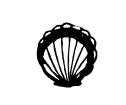Ohio History Journal
224
Ohio Arch. and Hist. Society Publications
in Civil War time, for he says that
"soon a hundred
thousand men were singing 'And his soul
goes marching
on.'"
It was the singing of this song by
thousands of the
boys in blue that inspired Julia Ward
Howe, the wife
of Samuel G. Howe, the financial
supporter of John
Brown, to write The Battle Hymn of
the Republic,
a poem that still has its appeal to
those who have not
come completely under the spell of
"the new literature."
The world seems to be finding it
difficult to forget
John Brown. As trains approach Harper's
Ferry the
passengers begin to talk about the
famous raid and the
old man who led it. He is the subject
of more dis-
cussions than the sanity of Hamlet, but
his name seems
destined to endure while the Blue Ridge
Mountains
stand and the Potomac rolls through
them to the sea.
GEORGE KENNAN
We regret to chronicle the death of an
Ohioan who
had attained an enviable reputation as
traveler, author,
lecturer and newspaper correspondent.
George Kennan
was born at Norwalk, Ohio, February 16,
1845. He was
the son of John and Mary Ann (Morse)
Kennan. He
was educated in the public schools of
his native town,
early manifested interest in telegraphy
and became an
operator before he reached his
majority. In 1865 he
went to northeastern Siberia as an
explorer and tele-
graph engineer where later he
superintended the con-
struction of a portion of the
Russo-American telegraph
line. In 1870 he began the exploration
of the mountain
region of eastern Caucasus and
Daghestan. Here he
spent almost two years after which he
returned to
America and devoted himself to
journalism and the
Reviews, Notes and Comments 225
lecture platform until 1877 when he
became night man-
ager of the Associated Press at
Washington, D. C. In
this position he continued eight years.
In 1885 accompanied by G. A. Frost, an
artist, he
started on a journey through Russia and
Siberia to
investigate the Russian exile system.
He visited all the
mines and prisons "between the
Ural Mountains and
the headwaters of the Amur." He
traveled 15,000
miles and published in 1891 as a result
of his observa-
tions the work that made him famous, Siberia
and the
Exile System. This had appeared serially in the Cen-
tury Magazine, 1889-1890. He lectured frequently on
the exile system in Great Britain and
the United States.
The results of his contributions on
this subject went
far toward creating a pronounced public
opinion op-
posed to the government of the Czar and
especially to
the exile system.
In 1898 during the war with Spain he
visited
Cuba and contributed interesting articles
to the Out-
look of New York.
In 1901 he went to Russia to visit
Count Tolstoy.
He was arrested by the Minister of the
Interior in
Russia and deported from the empire.
In 1902 he accompanied some American
scientists
and explored Mount Pelee, on the Island
of Martinique,
after the eruption of that volcano. In
1904 he was
correspondent of the Outlook in
the Far East through
the Russo-Japanese War including the
siege of Port
Arthur which he personally observed
with the Japanese
Army. After the close of the war he
remained about
two years in the Far East traveling
through Japan,
China, Manchuria and Korea. In
1906-1907 he was
Vol. XXXIII--15.
|
226 Ohio Arch. and Hist. Society Publications in California as correspondent for McClure's Magazine. In 1908 he went to England and translated from the original Russian manuscript General Kuropatkin's History of the Japanese War. Following is a list of his works that have appeared in book form: Siberia and the Exile System (1891); Campaigning in Cuba (1899); The Tragedy of Pelee (1902); Folk Tales of Napoleon (1902); Tent Life in Siberia (1910); A Russian Comedy of Errors (1915); The Chicago and Alton Case (1916); The Sal- ton Sea (1917); E. H. Harriman -- A Biography (1922). On September 25, 1879, Mr. Kennan married Em- maline Rathbone Weld of Medina, New York. He died at his home in Medina, New York, May 10, 1924. |
|
|
